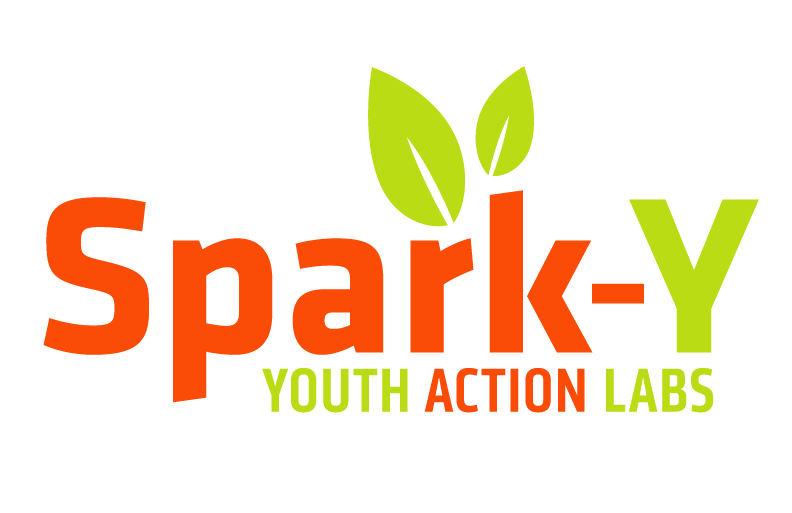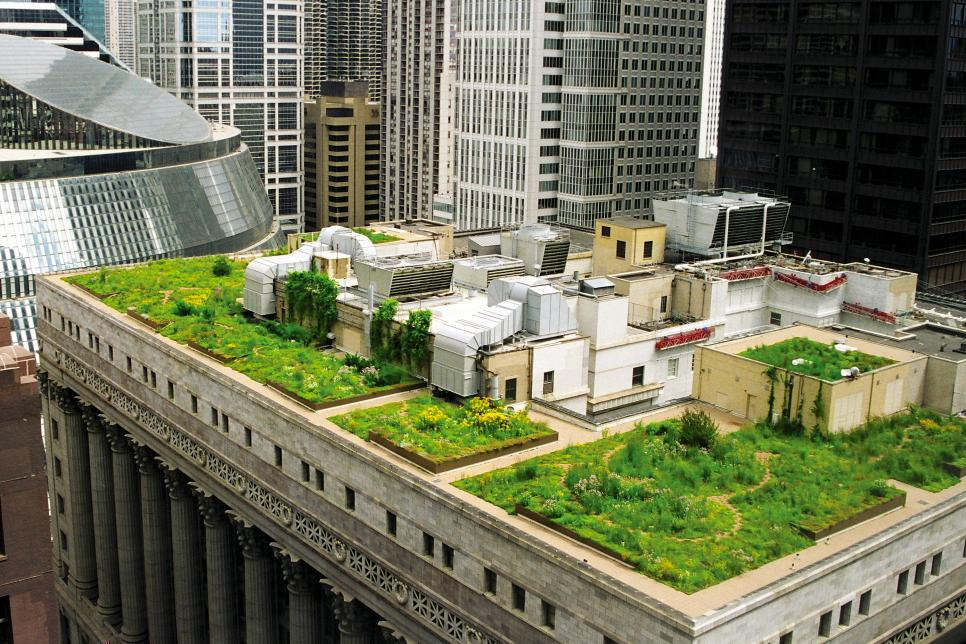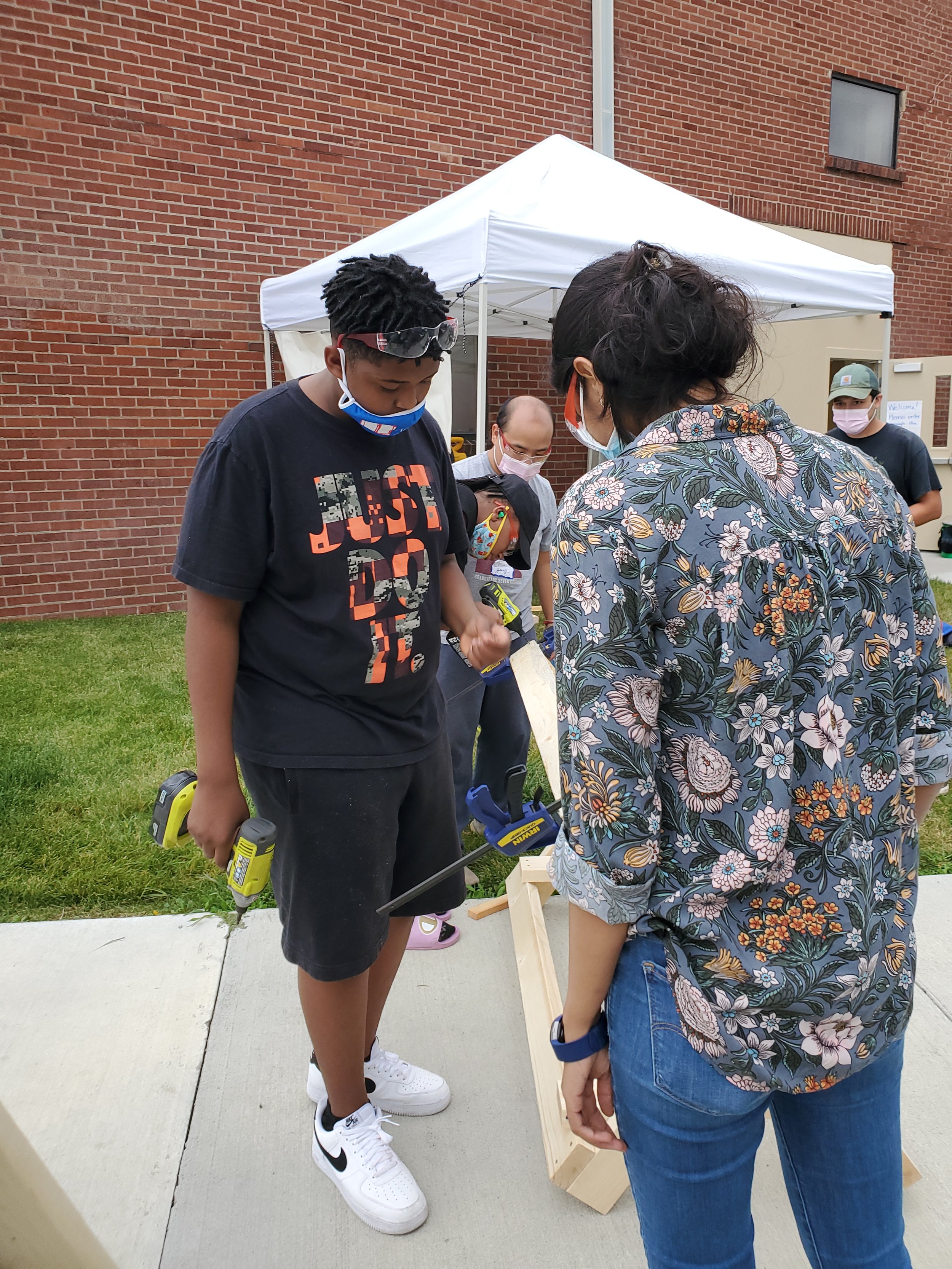About the Spark-Y Right Track+ Internship: The Right Track+ program is a collaboration between Ramsey County, the City of Saint Paul, local employers, and community organizations including Spark-Y. The goal of this program is to provide job training and professional development to unemployed or underemployed young adults experiencing the negative economic impacts of the pandemic for the purpose of assisting them in entering an in-demand career pathway.
The following post was written by Chue Yang, Right Track+ Intern with Spark-Y.
Friendship Build with Right Track +
Near the end of August, Spark-Y teamed up with some volunteers from Accenture to help build a raised bed and compost bin for Friendship Academy of Arts. I have been an intern with Spark-Y for a couple of months now and each week there were always exciting new projects for the interns to work on. There was the hope that it will not rain, as I helped the Sustainability and Agriculture Director, Caitlin, set up two large white tents for the compost bin and raised garden bed projects.
The day before, I had to grab a large 50 gallons water barrel from the University of Minnesota which barely fit in my little Prius for the project build. Spark-Y continued to find ways to reuse old and donated materials to create sustainable projects that are closely tied to its mission of empowering youth with hands-on education and sustainability.
As we prepared the materials and started to cut the wood pieces for the two projects, Accenture volunteers and the students at Friendship Academy of Art began to show up. Students take turns drilling holes and screwing the wood pieces together. The Accenture volunteers were great at leading and guiding the students. The structures for holding the compost bin and the raised garden bed started to take their form. The feeling of seeing the two projects coming together brought smiles both to the adults and small students.



















